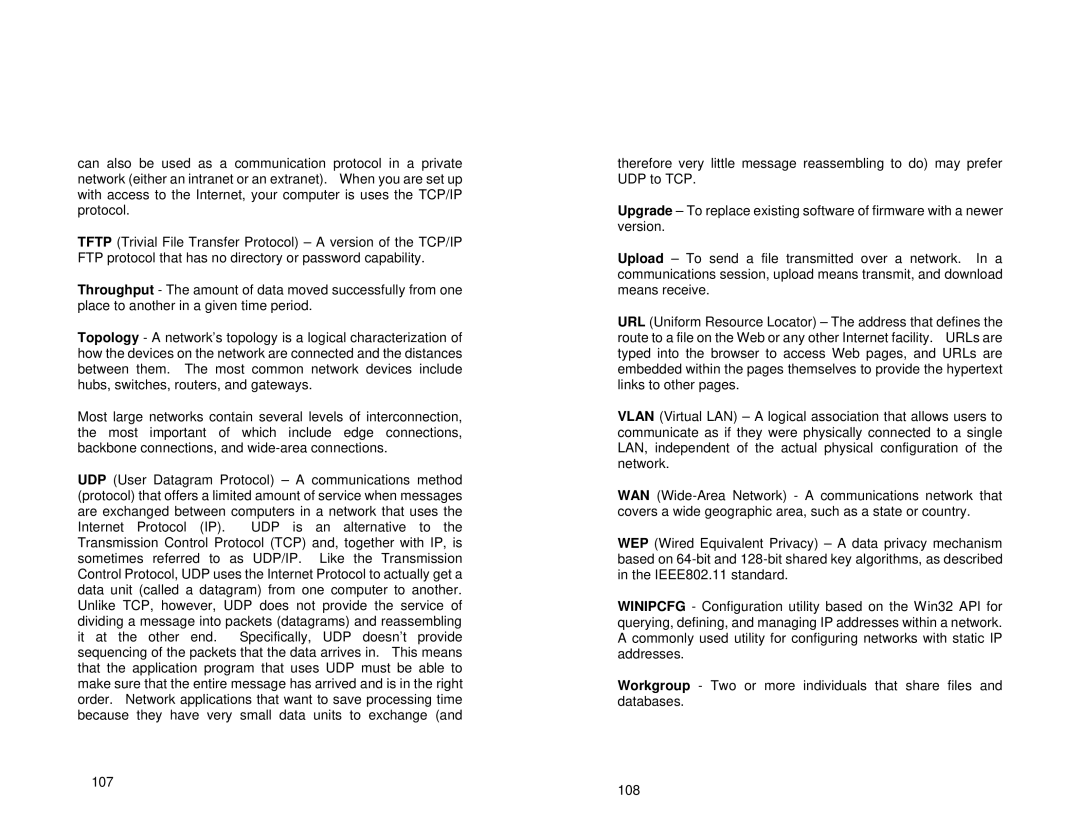can also be used as a communication protocol in a private network (either an intranet or an extranet). When you are set up with access to the Internet, your computer is uses the TCP/IP protocol.
TFTP (Trivial File Transfer Protocol) – A version of the TCP/IP FTP protocol that has no directory or password capability.
Throughput - The amount of data moved successfully from one place to another in a given time period.
Topology - A network’s topology is a logical characterization of how the devices on the network are connected and the distances between them. The most common network devices include hubs, switches, routers, and gateways.
Most large networks contain several levels of interconnection, the most important of which include edge connections, backbone connections, and
UDP (User Datagram Protocol) – A communications method (protocol) that offers a limited amount of service when messages are exchanged between computers in a network that uses the
Internet Protocol (IP). UDP is an alternative to the Transmission Control Protocol (TCP) and, together with IP, is sometimes referred to as UDP/IP. Like the Transmission Control Protocol, UDP uses the Internet Protocol to actually get a data unit (called a datagram) from one computer to another. Unlike TCP, however, UDP does not provide the service of dividing a message into packets (datagrams) and reassembling it at the other end. Specifically, UDP doesn’t provide sequencing of the packets that the data arrives in. This means that the application program that uses UDP must be able to make sure that the entire message has arrived and is in the right order. Network applications that want to save processing time because they have very small data units to exchange (and
107
therefore very little message reassembling to do) may prefer UDP to TCP.
Upgrade – To replace existing software of firmware with a newer version.
Upload – To send a file transmitted over a network. In a communications session, upload means transmit, and download means receive.
URL (Uniform Resource Locator) – The address that defines the route to a file on the Web or any other Internet facility. URLs are typed into the browser to access Web pages, and URLs are embedded within the pages themselves to provide the hypertext links to other pages.
VLAN (Virtual LAN) – A logical association that allows users to communicate as if they were physically connected to a single LAN, independent of the actual physical configuration of the network.
WAN
WEP (Wired Equivalent Privacy) – A data privacy mechanism based on
WINIPCFG - Configuration utility based on the Win32 API for querying, defining, and managing IP addresses within a network. A commonly used utility for configuring networks with static IP addresses.
Workgroup - Two or more individuals that share files and databases.
108
